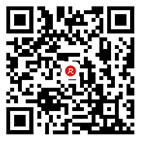
Usage rules of ammeter from Kunshan ammeter manufacturer:
① The ammeter should be connected in series with the electric appliance in the circuit (otherwise, the ammeter will be burnt due to short circuit)
② The current should come in from the "+" terminal and come out from the "-" terminal (otherwise, the pointer will be reversed and the needle will be bent easily.)
③ The current to be measured should not exceed the range of the ammeter (you can try to touch it to see if it exceeds the range.)
④ It must not be allowed to connect the ammeter to the two poles of the power supply without using electrical appliances (the internal resistance of the ammeter is very small, equivalent to a wire). If the ammeter is connected to the two poles of the power supply, the pointer will be crooked, or the ammeter, power supply and wire will be burned.)
Note: first burn the ammeter, then destroy the source
How to use ammeter
1. Adjust the zero button with a flat screwdriver.
2. Selection of measuring range (estimated by experience or by touch test)

Ammeter comes down to three views and three questions to see the range of ammeter first, generally on the dial marked. After confirming one of the cells indicates how many amps connect the positive and negative terminals of the ammeter into the circuit, observe the position of the pointer and then read. In addition, the ammeter with the appropriate range should be selected. You can try to touch it first. If the pointer does not swing obviously, change the meter with small range. If the pointer swings at a large angle, change the table for a large range. The general pointer is around the middle of the dial, and the reading is more appropriate.
One look: range, ammeter measurement range.
Second, the index value, a small cell of the dial represents how much.
Three: pointer position, the position of the pointer contains how many index values.
Ammeter reading
1. See the range
2. See the index value clearly (generally speaking, the scale 0-3A index value is 0.1A and 0-0.6a is 0.02A)
3. See the stay position of the probe (always observe from the front)
Preparation before use:
1. Adjust the zero button with the flat tap.
2. Range (estimated by experience or touch test method)
The use method of ammeter
1. Connection table
Ammeter must be connected in series in the circuit to be tested, so that the current flows from the "+" terminal of ammeter and out of the "-" terminal. When using ammeter, its two terminals must not be directly connected to the two poles of the power supply, otherwise, the ammeter will be burnt out due to excessive current.
2. Select the range of the table
The ammeter has three terminals, as shown in the figure above. If the ammeter is connected to the two terminals of "+" and "0.6", its range is 0.6A, and read the group of values on and below the dial; If connected to the terminals "+" and "3", the range is 3a, and the set of values on the dial is read. Before the experiment, if we don't know how to connect, we can estimate the current value in the circuit first. If the estimated current is less than 0.6A, the range should be selected. If the estimated current is greater than 0.6A, but less than 3a, the range should be selected. If it is not estimated, it can be carried out by touch test (fixing one terminal and using another terminal of circuit to quickly measure the terminal), and then selecting the appropriate range according to the deflection angle of ammeter pointer.
3. Test circuit
After the physical drawing is connected according to the circuit diagram, the test connection must be carried out. Carefully observe the deflection of ammeter pointer during test connection. If the pointer does not deflect, it means that there is an open circuit somewhere in the circuit; If the pointer deflects in the opposite direction, it indicates that the positive and negative terminals of the table are connected reversely; If the angle of pointer deflection is too large, the range is selected to be small; If the angle of pointer deflection is too small, the range is too large. Then according to the observed situation during the test, the relevant experiments are carried out after the corresponding adjustment.

0512-57550893
